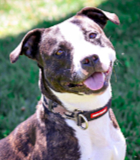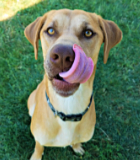Kids and Pets Interaction Guide
- This topic has 0 replies, 1 voice, and was last updated 16 years, 3 months ago by .
Viewing 1 post (of 1 total)
Viewing 1 post (of 1 total)
- You must be logged in to reply to this topic.









Home » Topics » RESOURCE LIBRARY » Kids and Pets Interaction Guide
We are excited to share that we are now partnering with Bonfire, an online store to raise funds by selling Mackenzie’s shirts. Learn more...

 Thank you for your generous donations to Mackenzie's!
The collars are incredible!
Thank you for your generous donations to Mackenzie's!
The collars are incredible!A guide to ages and species.
Guide by Stephen Zawistowski, Ph.D, ASPCA Executive Vice President of National Programs
Infants
Primary Issues: Introduction to current pets
Recommend: N/A
Tasks for the Child: N/A
Other Observations: Resident dogs and cats need gradual, supervised introduction to infants.
Toddler
Primary Issues: Curiosity; pulling, touching, etc.
Recommend: N/A
Tasks for the Child: N/A
Other Observations: Care must be taken with dog food dishes, toys; litter boxes for cats; aquarium wires.
3-5 Years
Primary Issues: Learning about contact, empathy.
Recommend: Guinea Pig
Tasks for the Child: Filling water bottle and food dish
Other Observations: Guinea pigs like to be held, seldom bite and will whistle when excited or happy.
5-10 Years
Primary Issues: Attention span is variable
Recommend: Shelf pets or goldfish
Tasks for the Child: Clean cages with adult help, supervised play with dogs/cats
Other Observations: Adults should always check to ensure that pets have food/water and cages are secured.
10-13 Years
Primary Issues: Greater interest in pets and capacity for responsibility
Recommend: Dogs, Cats, Rabbits
Tasks for the Child: Feed pet; walk dog; clean rabbit cage; clean cat litter
Other Observations: Children this age can be reliable, but adults should always check on food/water, etc. Participation in dog training classes are an excellent learning opportunity for children.
14-17 Years
Primary Issues: Competition for time and attention (i.e. Sports, clubs, etc.)
Recommend: Birds, Aquariums
Tasks for the Child: Most tasks. Use allowance to buy treats, etc.
Other Observations: Developing interest as a fancier, more likely to do research or read about the species. Parents should note that dogs and cats acquired at this age will probably stay in the home when the child leaves for college, etc.


